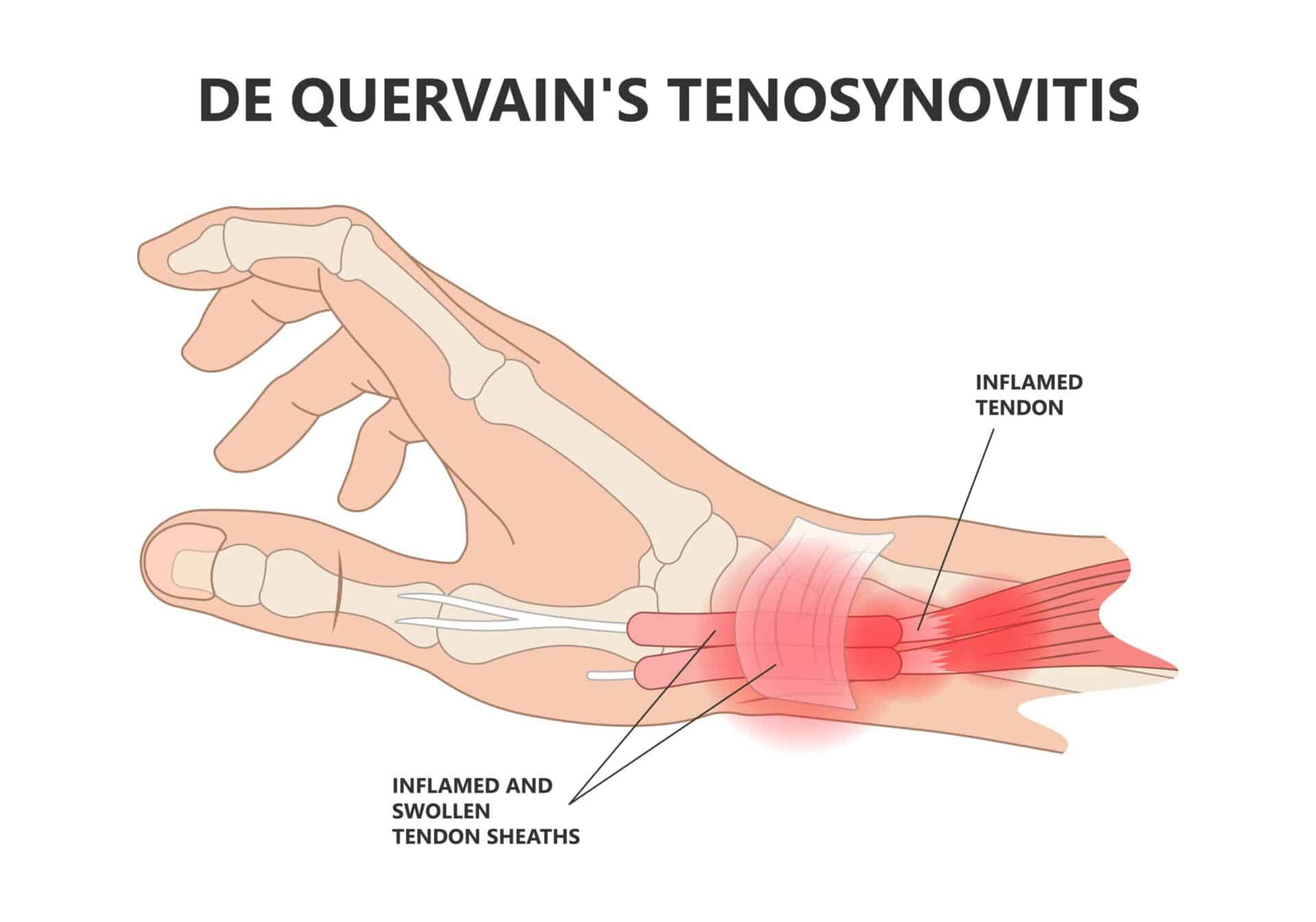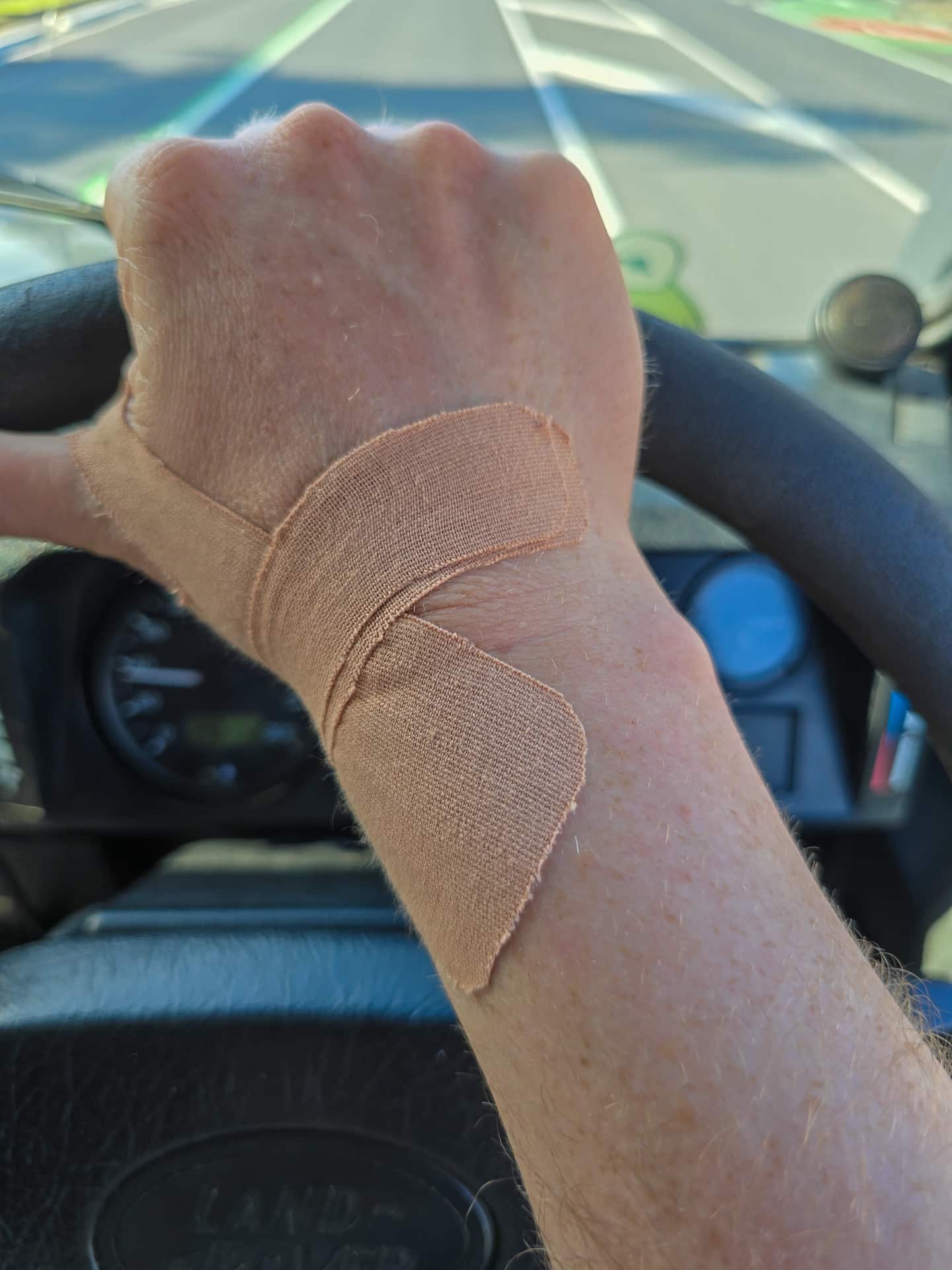Hey folks, so, I recently had a bit of a run-in with De Quervain’s Tenosynovitis. It’s a fancy name for a condition affecting the tendons on your wrist’s thumb side. Trust me, it’s not as fun as it sounds.
In my infinite wisdom (or perhaps driven by my ego), I managed to aggravate it through a combination of pre-fatiguing my arms during an MMA night and then continuing to train. At first, it was just a niggle, but it gradually got worse.
Being the stubborn bloke that I am, I initially ignored it. I was determined to push through the pain and not let it interfere with my training. However, as my upcoming BJJ grading loomed closer, I realized I might have to take a step back. The thought of missing my grading and potentially delaying my goal of achieving my blue belt this year made me reconsider my approach.
I had a rather amusing conversation with my physiotherapist, who also happens to be a BJJ practitioner. I explained that my entire year’s goal hinged on this grading, and I was willing to do whatever it took to get through it, even if it meant dealing with the consequences later. I admit it was not the most sensible plan, but it was the one I had settled on.
Surprisingly, my tendon wasn’t significantly worse after the grading. I attribute this to the fact that I had given it a proper rest in the lead-up to the grading. However, I still decided to seek professional help and visited a hand therapist. I was given a splint to wear for a week or so, and thankfully, a follow-up appointment revealed that the swelling had reduced considerably. I’m now back to light training and cautiously optimistic about a full recovery.
This whole experience has been a valuable lesson in listening to your body and setting aside your ego. Getting caught up in pursuing our goals is easy, but sometimes, we need to take a step back and prioritize our health.
In this blog post, I’ll delve deeper into De Quervain’s Tenosynovitis, discussing its causes, remedies, and the importance of setting aside your ego to allow your body to heal properly.

What is De Quervain’s Tenosynovitis?
De Quervain’s Tenosynovitis is a condition that affects the tendons on the thumb side of your wrist. These tendons are responsible for moving your thumb and allowing you to grip objects. When they become inflamed, it can cause pain, swelling, and difficulty moving your thumb.
What Causes De Quervain’s Tenosynovitis?
Several factors can contribute to De Quervain’s Tenosynovitis. Overuse or repetitive movements of the wrist and thumb are common culprits. This is why it’s often seen in people who engage in repetitive hand motions, such as musicians, athletes, and those who work on assembly lines.
In my case, it was a combination of pre-fatiguing my arms during an MMA night and then continuing to train that led to the aggravation of my tendon. The pre-fatigue likely weakened my muscles and made them more susceptible to injury, while the continued training further exacerbated the problem.
Other factors that can contribute to De Quervain’s Tenosynovitis include:
- Direct injury to the wrist
- Inflammatory conditions such as rheumatoid arthritis
- Certain medical conditions, such as diabetes and thyroid disorders
What are the Symptoms of De Quervain’s Tenosynovitis?
The most common symptom of De Quervain’s Tenosynovitis is pain on the thumb side of your wrist. This pain may worsen when you move your thumb or make a fist. Other symptoms include:
- Swelling on the thumb side of your wrist
- Difficulty moving your thumb
- A “catching” or “snapping” sensation when you move your thumb
- Numbness or tingling in your thumb and index finger
How is De Quervain’s Tenosynovitis Diagnosed?
Your doctor will typically diagnose De Quervain’s Tenosynovitis based on your symptoms and a physical examination. They may perform a Finkelstein test, which involves bending your thumb across your palm and then bending your wrist towards your little finger. This movement will typically elicit pain if you have De Quervain’s Tenosynovitis.
Sometimes, your doctor may order imaging tests such as an X-ray or ultrasound to rule out other conditions.

What are the Treatment Options for De Quervain’s Tenosynovitis?
The primary goal of treatment for De Quervain’s Tenosynovitis is to reduce pain and inflammation and restore normal function to your wrist and thumb. Treatment options may include:
- Rest: Avoiding activities that aggravate your symptoms is crucial. This may involve modifying your training routine or taking a break from certain activities altogether.
- Splinting: Wearing a splint can help immobilize your thumb and wrist, allowing the tendons to rest and heal.
- Medications: Over-the-counter pain relievers such as ibuprofen or naproxen can help reduce pain and inflammation. In some cases, your doctor may prescribe stronger drugs such as corticosteroids.
- Physical therapy: A physical therapist can teach you exercises to strengthen your wrist and thumb muscles and improve your range of motion.
- Injections: Corticosteroid injections can help reduce pain and inflammation. However, they are not a long-term solution and may have side effects.
- Surgery: In rare cases, surgery may be necessary to release the affected tendons.
How Can I Prevent De Quervain’s Tenosynovitis?
While it’s not always possible to prevent De Quervain’s Tenosynovitis, there are steps you can take to reduce your risk:
- Avoid overuse: Be mindful of repetitive movements and take breaks when necessary.
- Use proper technique: When performing activities involving your wrist and thumb, ensure you use proper technique to avoid unnecessary strain.
- Stretch regularly: Stretching your wrist and thumb muscles can help keep them flexible and strong.
- Maintain a healthy weight: Obesity can increase your risk of developing De Quervain’s Tenosynovitis.
The Importance of Setting Aside Your Ego
My experience with De Quervain’s Tenosynovitis has taught me a valuable lesson about the importance of setting aside your ego and listening to your body. Getting caught up in pursuing our goals, whether achieving a certain rank in martial arts, reaching a fitness milestone, or excelling in our careers is easy. However, we must remember that our health is our most valuable asset.
Ignoring pain or pushing through injuries can lead to further damage and potentially derail our progress in the long run. Recognising when our bodies are telling us to slow down or take a break is essential.
In my case, I initially let my ego get the better of me and continued to train despite the pain in my thumb. I finally decided to back off when I realized I might miss my BJJ grading. Thankfully, I recovered in time for the grading, but it could have easily gone the other way.
If you’re experiencing pain or discomfort, don’t ignore it. Please seek professional help and follow their advice. Taking a temporary step back is better than risking a long-term setback.
Summary Table
| Topic | Description |
|---|---|
| What is De Quervain’s Tenosynovitis? | A condition affecting the tendons on the thumb side of the wrist |
| Causes | Overuse, repetitive movements, direct injury, inflammatory conditions |
| Symptoms | Pain, swelling, difficulty moving the thumb, catching or snapping sensation |
| Diagnosis | Physical examination, Finkelstein test, imaging tests |
| Treatment | Rest, splinting, medications, physical therapy, injections, surgery |
| Prevention | Avoid overuse, use proper technique, stretch regularly, maintain a healthy weight |
Export to Sheets
FAQ
What is the best way to sleep with De Quervain’s Tenosynovitis?
Sleeping with your wrist in a neutral position and your thumb supported can help alleviate discomfort. You may find it helpful to wear your splint at night or use a pillow to elevate your wrist.
Can De Quervain’s Tenosynovitis go away on its own?
In some cases, De Quervain’s Tenosynovitis may resolve independently with rest and avoidance of aggravating activities. However, if symptoms persist or worsen, seeking medical attention is essential.
How long does it take for De Quervain’s Tenosynovitis to heal?
The healing time for De Quervain’s Tenosynovitis varies depending on the severity of the condition and individual factors. Most people recover within a few weeks to a few months with proper treatment and self-care.
Is it safe to exercise with De Quervain’s Tenosynovitis?
It’s important to avoid activities that aggravate your symptoms. However, gentle exercises that don’t strain your wrist and thumb can be beneficial. Consult with your doctor or physical therapist for guidance on appropriate exercises.
Can De Quervain’s Tenosynovitis recur?
Yes, De Quervain’s Tenosynovitis can recur, primarily if you don’t address the underlying causes or engage in activities that aggravate your symptoms. It’s essential to be mindful of your wrist and thumb health and take steps to prevent recurrence.
I hope this blog post has provided valuable information about De Quervain’s Tenosynovitis. Remember, listening to your body and prioritising your health is crucial. Don’t let your ego get in the way of your well-being.
Take care and stay safe!



